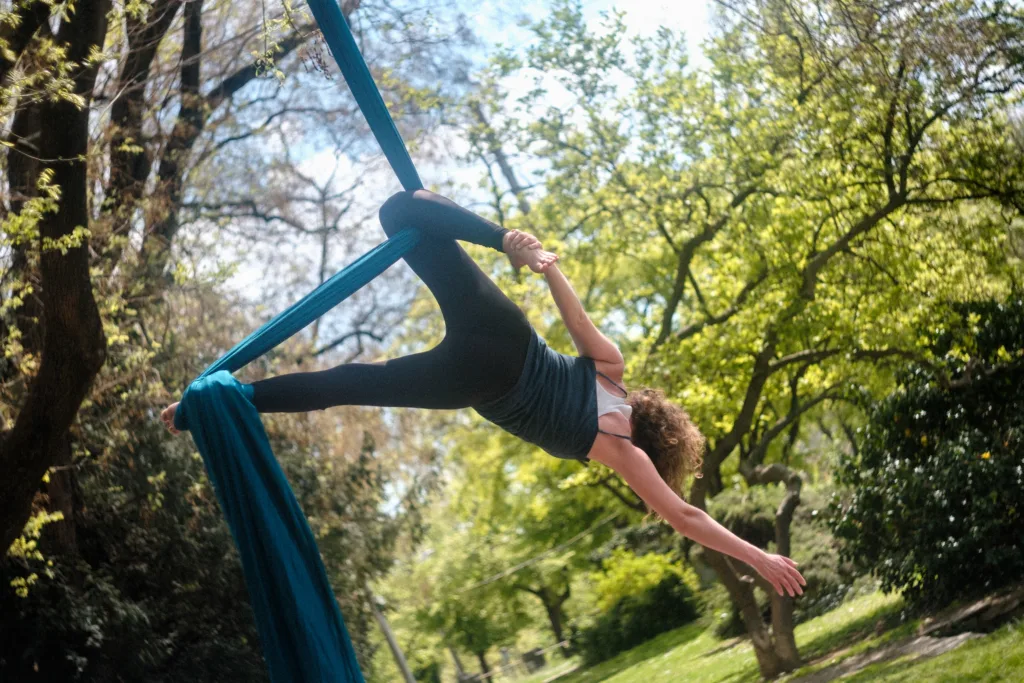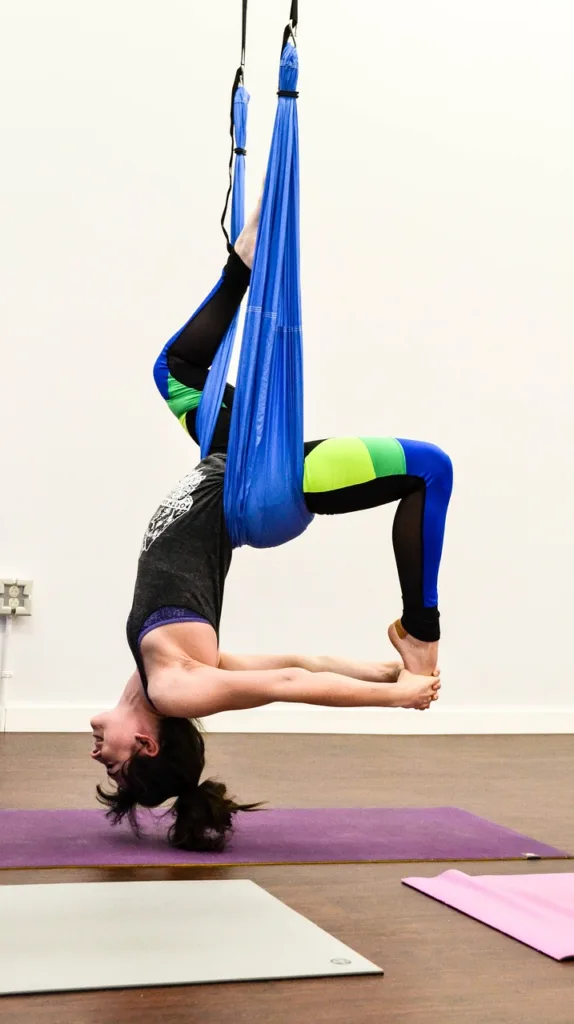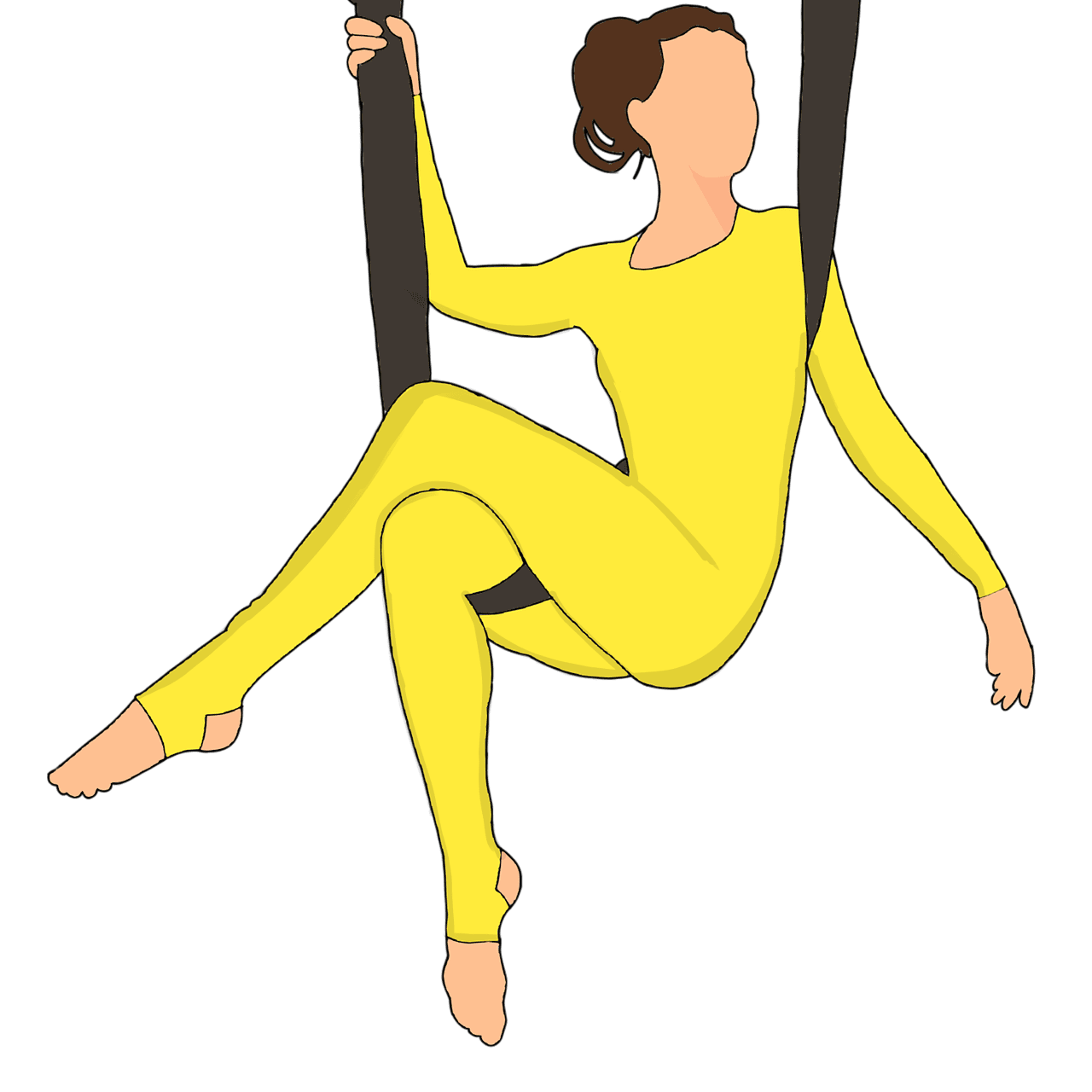Introduction to Aerial Yoga
Welcome to the world of aerial yoga, a unique blend of traditional yoga poses, Pilates, and dance with the use of a hammock. Aerial yoga is quickly gaining popularity, and for good reason. This form of workout not only helps to develop strength, stretch muscles, and improve flexibility, but it also allows you to explore the playful aspects of yoga.
Aerial yoga is a great way to shake up your routine and add an element of fun to your workout. It incorporates elements of traditional yoga, but with a twist – you’re suspended from the ceiling in a silk hammock. This allows for a greater range of motion and the ability to perform certain yoga postures that may be difficult on the ground.
The Benefits of Aerial Yoga
Aerial yoga offers a unique blend of strength, flexibility, and balance training. Here are some of the key benefits:
- Improved Flexibility: Aerial yoga helps to lengthen and stretch the muscles, improving overall flexibility. The yoga hammock acts as a prop, supporting the body in poses and allowing for deeper stretches.
- Strength Training: Many aerial yoga poses include elements of strength training. The act of balancing in the hammock engages the core, while poses like inversions work the upper body.
- Improved Posture: Aerial yoga can help to improve posture by strengthening the core and back muscles. The hammock supports the body in poses that lengthen the spine and open the chest, promoting better posture.
- Stress Relief: Like traditional yoga, aerial yoga can help to reduce stress and promote relaxation. The gentle movements and deep breathing associated with yoga can have a calming effect on the mind.
- Fun and Variety: Aerial yoga is a fun and exciting way to exercise, offering a welcome change from more traditional workouts. The use of the hammock adds an element of playfulness and can make the workout more enjoyable.
While scientific studies specifically on aerial yoga are limited, research on traditional yoga and similar practices suggests these benefits. For example, a study by the American Physical Therapy Association found that yoga can help improve balance and mobility in older adults. Another study published in the International Journal of Yoga found that yoga can help reduce stress and anxiety.
| Benefit | Description | Scientific Evidence |
|---|---|---|
| Improved Flexibility | Aerial yoga helps to lengthen and stretch the muscles | Yoga has been found to improve flexibility (Harvard Health Publishing) |
| Strength Training | Many aerial yoga poses include elements of strength training | Yoga can help improve muscle strength (Harvard Health Publishing) |
| Improved Posture | Aerial yoga can help to improve posture by strengthening the core and back muscles | Yoga can improve balance and alignment, contributing to better posture (American Physical Therapy Association) |
| Stress Relief | Aerial yoga can help to reduce stress and promote relaxation | Yoga has been found to reduce stress and anxiety (International Journal of Yoga) |
| Fun and Variety | Aerial yoga is a fun and exciting way to exercise | Engaging in physical activities that are enjoyable can improve adherence to exercise (American Heart Association) |
Health Benefits
The benefits of aerial yoga are numerous. It’s a full-body workout that challenges your body in new ways. By using the aerial hammock as a prop, you can deepen your stretches, improve your balance, and build strength in a low-impact way that’s gentle on your joints.
Aerial yoga also offers unique health benefits. The inversion poses can help to relieve tension in the spine and improve blood circulation. There’s anecdotal evidence that suggests aerial yoga can help with stress relief, mental clarity, and mood improvement.
Aerial Yoga and Circus Arts
Aerial yoga is not just for fitness enthusiasts; it’s also a stepping stone to the exciting world of aerial arts and circus acrobatics. Many aerial yoga studios offer specialty aerial yoga classes that incorporate elements of circus arts, like aerial silks and rope work.

Aerial Yoga Equipment: The Aerial Hammock
The aerial hammock, also known as a yoga swing or silk, is the main apparatus used in aerial yoga. It’s a piece of fabric that’s suspended from the ceiling or a beam, providing a soft and supportive surface for your aerial yoga practice.
Setting up an aerial hammock at home may seem intimidating, but with the right equipment and setup, it’s entirely possible. You’ll need a sturdy ceiling mount, carabiners, and a silk hammock that’s the right length for your height.
Aerial Yoga Class: What to Expect
Your first class at an aerial yoga studio can be a transformative experience. The instructor will guide you through a series of poses, from simple stretches to more complex inversions.
Aerial yoga classes often start with a warm-up on the mat, followed by a progression of poses in the hammock. You’ll learn to flip, swing, and fly through the air, all while improving your strength, flexibility, and posture.
The instructor will also provide tips for beginners to ensure everyone is practicing safely and effectively. They’ll help you adjust the hammock to the right height, demonstrate how to get in and out of the hammock, and provide modifications for poses as needed.
Aerial Yoga Poses for Beginners
Aerial yoga, an antigravity workout, combines traditional yoga poses, Pilates, and dance with the use of a yoga hammock. This form of aerial fitness uses a sling or strap, often referred to as an aerial yoga hammock, which is suspended from the ceiling. This allows for a greater range of motion and the ability to perform certain yoga postures that may be difficult on the ground.
Here are a few beginner-friendly aerial yoga poses:
- Mountain Pose in the Hammock: Stand in front of the hammock and lean back, letting it support your weight. Extend your arms out to the sides and keep your feet grounded. This pose helps to lengthen the spine and improve posture.
- Seated Forward Bend in the Hammock: Sit in the hammock with your legs extended in front of you. Lean forward from the hips, reaching for your toes. This pose stretches the hamstrings and lower back.
- Inverted Straddle: This pose is a beginner-friendly inversion. Sit in the hammock, then lean back and lift your legs up and apart, reaching for a straddle position. This pose can help to decompress the spine and increase blood flow to the brain.
- Aerial Lunges: Stand with one foot on the ground and the other foot in the hammock, positioned at your ankle. Bend your standing leg into a lunge, keeping your foot in the hammock lifted. This pose strengthens the legs and improves balance.
Safety Tips for Beginners
Safety should be your top priority when starting your aerial yoga practice. Here are some tips to keep in mind:
- Always warm up before starting your practice to prepare your body for the workout.
- Listen to your body and don’t push yourself too hard. It’s okay to take breaks and rest when needed.
- Make sure your hammock is securely attached to the ceiling or a sturdy beam. If you’re practicing at home, consider getting your setup checked by a professional.
- Always practice with a mat underneath you for safety.

Practicing Aerial Yoga at Home
Practicing aerial yoga at home can be a rewarding experience. It allows you to practice at your own pace, in your own space. Here are some tips for beginners who want to start an at-home aerial yoga practice:
- Equipment: Invest in a high-quality aerial hammock. Make sure it comes with all the necessary hardware, including carabiners and a ceiling mount. You’ll also need a yoga mat for safety.
- Setup: Choose a space with high ceilings and no obstructions. The hammock should be installed on a beam or a ceiling that can support your weight. Consider hiring a professional to install it if you’re unsure.
- Safety: Always check your equipment before you start practicing. Make sure the hammock is secure and the carabiners are closed. Use a mat underneath your hammock for safety.
- Instruction: Consider taking a few aerial classes at a local studio before you start practicing at home. This will help you learn the basics and understand how to use the hammock safely. There are also many online resources and videos that can guide your practice.
- Patience: Remember, aerial yoga is a practice. Don’t be discouraged if you find some poses challenging at first. With time and practice, you’ll see progress.
Conclusion: Embrace the Benefits of Aerial Yoga
Aerial yoga is a unique and fun way to improve your fitness, flexibility, and strength. Whether you’re a seasoned yogi looking to spice up your practice or a beginner looking for a new way to workout, aerial yoga has something to offer.
Remember, the most important part of aerial yoga is to have fun. So, embrace the challenge, try something new, and most importantly, enjoy the journey. Aerial yoga might just be the thing that takes your fitness and wellness to new heights.
Whether you’re practicing in a studio or at home, aerial yoga is a great way to add variety to your workout routine. So why not give it a try? You might just find that you love the feeling of freedom and fun that comes with practicing yoga in the air.

FAQs
Q: Is there a weight limit for aerial yoga?
A: Generally, the aerial yoga hammocks can support weight up to 300 pounds. However, it’s always best to check with the manufacturer or your aerial yoga instructor to be sure. The hammocks are made from high-strength materials, designed to hold your bodyweight while you perform various poses, including inversions.
Q: Who should not do aerial yoga?
A: While aerial yoga is a low-impact and adaptable workout, it may not be suitable for everyone. People with certain conditions like vertigo, high blood pressure, or glaucoma may want to avoid it. It’s always best to consult with a healthcare provider or a physical therapist before starting any new fitness regimen, including aerial yoga.
Q: Can you lose weight doing aerial yoga?
A: Aerial yoga can contribute to weight loss as part of a balanced diet and regular exercise routine. The workout can help burn calories, build muscle, and improve conditioning. However, weight loss varies from person to person and depends on various factors including diet, lifestyle, and genetics.
Q: Is Flying Yoga good for Weight Loss?
A: Yes, flying yoga, another term for aerial yoga, can be an effective way to lose weight. It combines elements of yoga, Pilates, and gymnastics in a high-intensity, low-impact workout that can help burn calories and tone muscles.
Q: Can everyone do aerial yoga?
A: Most people can do aerial yoga. It’s a versatile workout that can be adapted to different fitness levels. However, it’s always best to consult with a healthcare provider before starting any new fitness regimen, especially if you have any health concerns or medical conditions.
Q: How is aerial yoga different from normal yoga?
A: Aerial yoga incorporates traditional yoga poses but uses a hammock or silk installed from the ceiling for support and to allow for a greater range of movement. This allows for deeper stretches and the ability to perform inversions without putting pressure on the joints. It’s a unique blend of yoga, Pilates, and aerial arts.
Q: How often should you do aerial yoga?
A: This depends on your fitness level and goals. As a general guideline, you might start with one or two classes a week and adjust as needed. Some people might find that they benefit from more frequent classes, while others might prefer to mix aerial yoga with other forms of exercise for a balanced fitness routine.





















